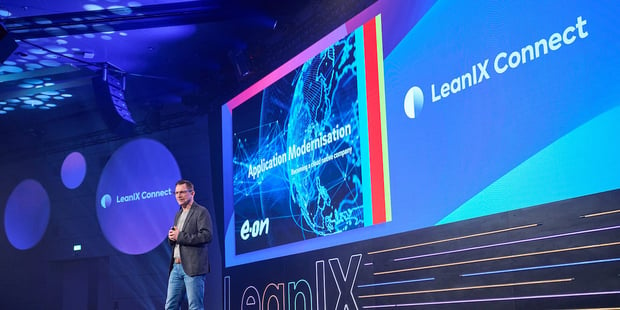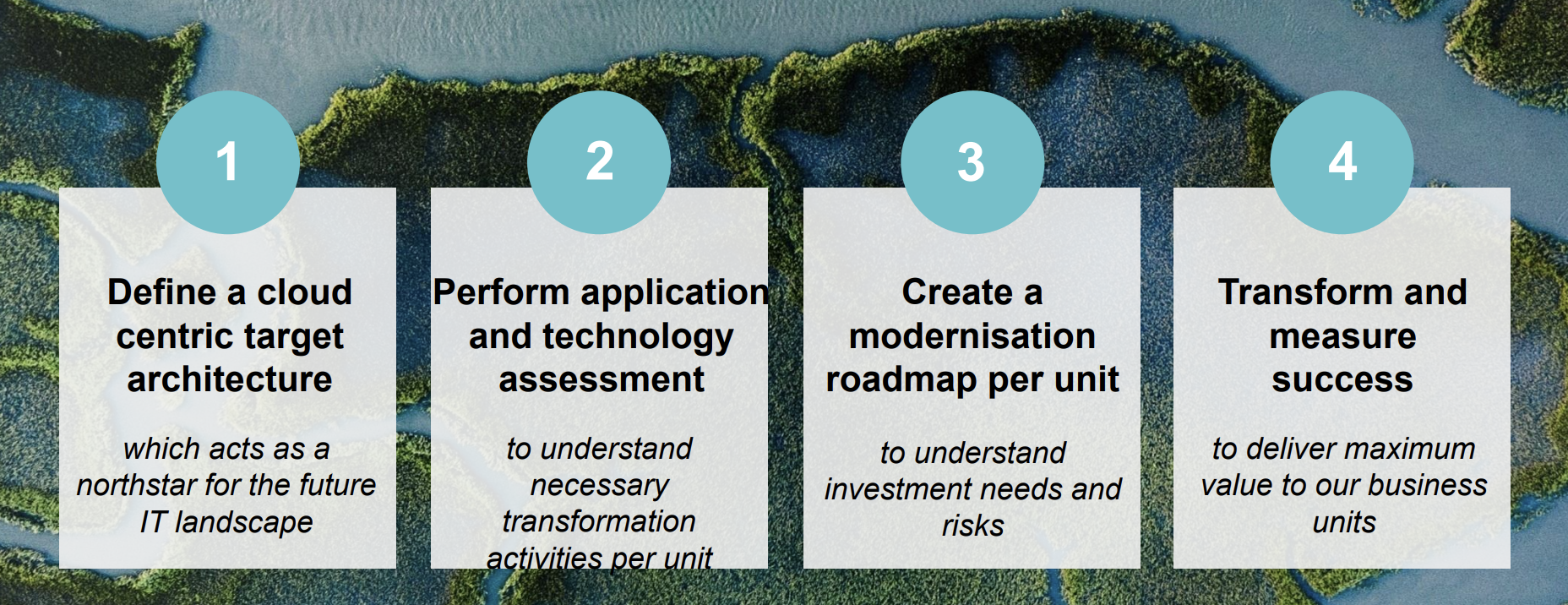
E.ON spoke at our recent LeanIX Connect summit on the necessity of becoming a cloud-native energy supplier to survive in the modern market. Let's recap what E.ON told us and how LeanIX is supporting their initiatives.
 E.ON Group's Chief Architect, Markus Rink, spoke at our Connect summit Europe 2023 on May 10. Markus opened day two of the event by explaining why cloud migration was top on E.ON's list of priorities.
E.ON Group's Chief Architect, Markus Rink, spoke at our Connect summit Europe 2023 on May 10. Markus opened day two of the event by explaining why cloud migration was top on E.ON's list of priorities.
He opened by telling us that the supply of energy from a central location to a grid of connected consumers could be seen as the first cloud service. Thinking of it this way, you could say the companies that would become E.ON were working in the cloud since the 1920s.
Since then, energy has become essential to society's function, and the energy grid becomes ever more complex. Without transitioning to cloud infrastructure, Markus told us, energy companies will not be able to manage their networks in 10 years' time.
Local regulation and cyber security concerns prevent E.ON from moving certain core systems over to the cloud. However, the company has set itself a goal of moving all the applications it can to cloud servers by the end of this year.
95% of E.ON's data has already been shifted from data centers into the cloud. Yet, this has led the company to discover that there is a big difference between moving to the cloud and living in the cloud.
Markus explained that lifting processes and applications into cloud storage without adapting them to a digital environment isn't enough. E.ON's focus now is on application rationalization for a cloud environment.
E.ON: What It Means To Live In The Cloud
Markus elaborated by comparing the differences between cloud migration and cloud operation:
|
Move to the cloud
|
Live in the cloud
|
To succeed at "living in the cloud", E.ON identified a list of factors that define what it means to be a cloud-native company:
Cloud only - wherever possible, everything should be in the cloud
Zero trust - devices, users, requests and services must all abide by security policies
Interface interaction - the only way to interact with a service is through an event or application programming interface (API)
Data centricity - data is independent from any single application
Re-use, re-use, re-use - design by re-use, design for re-use, and build for re-use
Everything is code - everything should be designed for continuous integration and delivery
Build global - build technology platforms that can be used throughout your organization
Becoming Cloud-Native With LeanIX

E.ON has mostly already completed its cloud migration. What's left is to adapt its processes and landscape to fit the new environment.
This was easier said than done. Markus explained that E.ON's transformation plan involved:
- assessing more than 2,500 applications...
- ...from around 140 units...
- ...requiring over 1,000 actions...
- ...and more than 250 workshops
Markus explained that you can only ever follow a plan if it has fewer than four steps. Any more-complicated plan is doomed to failure.
E.ON's four-step plan for application modernization and rationalization is:
- Define a cloud-centric target architecture
- Perform application and technology assessment
- Create a modernization roadmap per unit
- Transform and measure success
To that end, E.ON made use of the LeanIX Enterprise Architecture Management (EAM) platform. This enabled E.ON to:
- build a model of their ideal state
- catalog and assess their current applications
- create a roadmap for transformation
- track the results of their progress
E.ON is now able to model the current "installed world" to the reference architecture and required business capabilities. This allows them to identify the adherence of their IT landscape to their ideal state.
Information is reported to the board on a quarterly basis through performance dialogues. This covers both the financial performance, and the IT landscape's performance against company strategic goals.
Using the powerful analysis and modeling capabilities of the LeanIX EAM, E.ON is able to understand their IT landscape, plan their transformation, and record their progress. They do all of this within the LeanIX Enterprise Architecture Management (EAM) platform.
Connect With Us
To watch Markus' entire presentation on demand, along with all the other keynote speeches from this year's Connect summit, register for free below:


